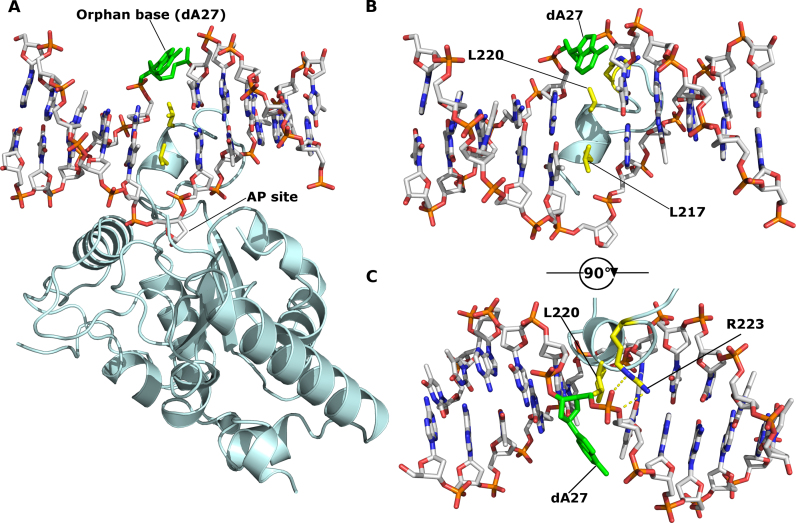Figure 2.
kUNG (pale cyan cartoon) in complex with DNA (sticks with grey carbons). Labelled residues, discussed below, are displayed as yellow sticks. The orphan base, dA27, is shown as green sticks. The AP site formed after uracil cleavage is labelled, no density was present for the cleaved uracil. (A) The overall architecture of the kUNG–dsDNA complex. (B and C) View of DNA and the kUNG leucine loop, only DNA and leucine loop residues are shown. Hydrogen bonds/electrostatic interactions are shown as yellow dashes. The leucine ‘loop’ includes a helical region that invades the minor groove presenting two leucine residues: L217, the canonical ‘doorstop’ residue which displaces the substrate uracil, and L220 which displaces the opposing ‘orphan’ base, dA27. The adenine base of dA27 is flipped out of the DNA duplex into the exterior environment, this is accompanied by the support of a strained backbone conformation by interactions with R223 of kUNG.

